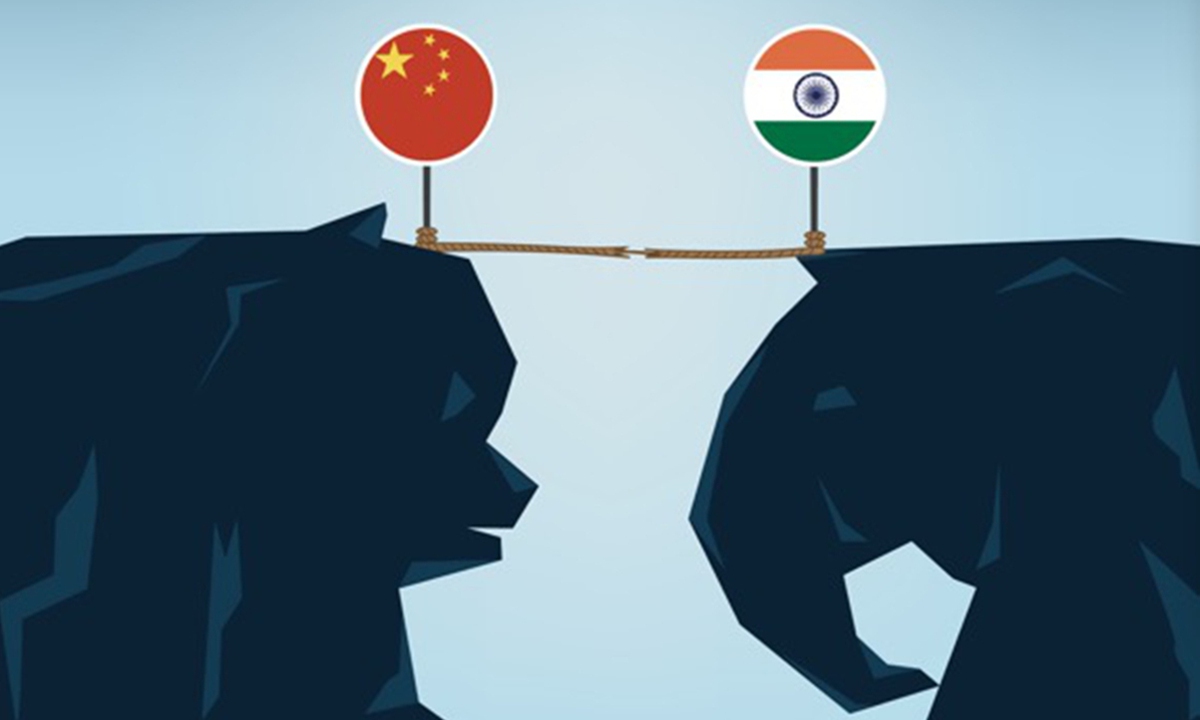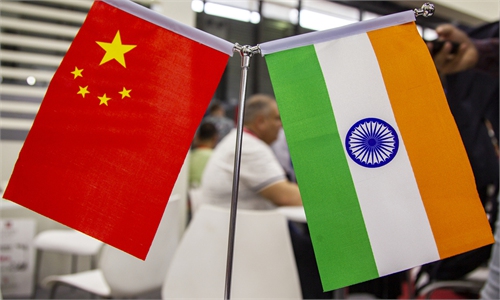Is S.China Sea card useful to New Delhi?

Illustration: GT
Editor's Note:India media, citing government sources, reported on Monday that India has deployed one of its frontline warships to the South China Sea soon after the Galwan Valley clash on June 15. The Indian warship was continuously maintaining contact with their American counterparts over secure communication systems. How to interpret these Indian naval moves? Is New Delhi playing a so-called South China Sea card to pressure Beijing? Global Times invited two scholars to share their views.
Li Jie, a Beijing-based naval expert
The deployment of the Indian Navy warship in the South China Sea and the Indian warship's contact with its US counterparts over "secure communication systems" could give the outside world the impression that India and the US are allies that can further strengthen cooperation in many regions such as the South China Sea and Indian Ocean. The primary goal of New Delhi is to hype up the issue and indicate it has the backing of Washington.
By sending a frontline warship to the South China Sea, India may also want to distract China's attention from the border dispute with India by exerting pressure on China on the high seas. However, this will hardly affect the border situation.
India is simply serving as an accomplice to the US. The US' Indo-Pacific Strategy needs the support of allies and petty followers. The US is stirring up the South China Sea situation in an attempt to strategically check China. With this, India hopes to contribute to make the waters muddier and unstable. It seeks to create disharmony in the South China Sea in order to create an advantageous situation for itself.
The possibility that India will escalate adventurous actions in the South China Sea cannot be ruled out. This could entail participating in joint exercises in the South China Sea with the US. India might even send aircraft carrier to the region in the future. China must first of all express firm opposition to the Indian Navy's presence in the South China Sea. Both the US and India are extraterritorial powers. Any of their military activities in the South China Sea will jeopardize regional security and stability. Second, China must closely monitor the Indian warship, judge the actions it might take and track it. If the Indian vessel takes any actions to undermine China's maritime rights or challenge China's territorial sovereignty, China must expel it or even resort to reasonable collisions. Should the Indian warship further escalate actions, China will have to make contingency plans and deal with it effectively.
India should have a clear estimation of itself. India's strength and capabilities at sea are dwarfed by those of China's. But as the US intensifies its containment on China and promotes the Indo-Pacific Strategy, India has acted like a fox assuming the majesty of the tiger. New Delhi hopes to rely on US power to exert pressure on China, and it has now actively cooperated with the US Indo-Pacific strategy in order to convince the US that it's a useful pawn that can cause trouble for China.
Long Xingchun, a senior research fellow of Academy of Regional and Global Governance, Beijing Foreign Studies University, and president of Chengdu Institute of World Affairs
There are voices in India suggesting it should play the South China Sea card to put pressure on China and to increase New Delhi's bargaining chips against Beijing. But deploying an Indian ship in the South China Sea would barely have any substantial influence on China. India has conveyed its hostility against China and showed loyalty to the US. But this will have no substantial impact on the South China Sea situation, the ownership of islands and reefs in the waters, the territorial disputes, or China's security. India's main purpose is to showcase its toughness against China amid the China-India border row— especially to cater to India's nationalist sentiments.
China doesn't have to worry a lot, but needs to keep vigilant and monitor the Indian warship's moves. If India sails its warship into China's 12-nautical mile territorial sea, it would lead to serious results. However, if Indian naval vessels only sail on the high seas, China only needs to keep up stiff surveillance. But if it provocatively sails within 12 nautical miles of China's South China Sea islands and reefs, I believe China will take countermeasures to safeguard its core interests, and India will not be able to bear the consequences.
Since the Galwan Valley clash, India has taken provocative actions to further worsen ties with China amid mounting domestic nationalism. In addition to playing the South China Sea card, some Indian scholars and officials have even proposed that India resort to playing the Tibet card and Taiwan card. These cards in fact would bring India no benefits. On the contrary, they will only deepen mistrust between China and India, and steer bilateral relations into a worse state.
The border issue should be resolved in a rational, calm and pragmatic manner based on mutual respect. Any attempt to play any card to pressure China will be in vain. New Delhi's strength is limited while Beijing has many countermeasures to strike back.


